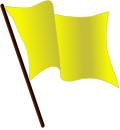History
After the restoration of democracy in 1989 liberalism became very divided. Before 2020, one could have distinguished five parties: the right of center Croatian Social Liberal Party (Hrvatska socijalno-liberalna stranka, member of LI, ALDE), two center liberal parties: Croatian People's Party - Liberal Democrats (Hrvatska narodna stranka - liberalni demokrati, observer in LI, member of ALDE) and People's Party - Reformists (Narodna stranka – reformisti, member of EDP), while left of center is Civic Liberal Alliance (Građansko-liberalni savez - GLAS, member of ALDE). Reformists and GLAS are formed from dissidents of the Croatian People's Party-Liberal Democrats. Istrian Democratic Assembly (Istarski demokratski sabor - Dieta Democratica Istriana, member of ALDE) is considered as Istrian regionalist, but also as a liberal party. In the 2020 Croatian parliamentary election two additional liberal parties emerged as factors on the national scene: Centre and Focus, both members of ALDE.
Main media exponents of Croatian liberalism or liberal ideas include or included newspapers Novi list and Glas Istre , culture magazine Zarez and the defunct weekly Feral Tribune .
1860–1945
- National Party (People's Party)
- From Progressive Party to Progressive Democratic Party
- Democratic Party (Dalmatia)
- 1906: Dalmatian liberals formed the Democratic Party (Demokratska stranka)
- 1908: The DS merged into the ⇒ Croatian People's Progressive Party
- From Democratic Community to Democratic Party (Yugoslavia)
- Independent Democratic Party
1989–present
- Croatian Social Liberal Union / Croatian Social Liberal Party
- 1989: Liberals formed the Croatian Social Liberal Union (Hrvatski socijalno-liberalni savez), renamed in 1990 into the Croatian Social Liberal Party (Hrvatska socijalno-liberalna stranka)
- 1998: A left-wing faction formed the ⇒ Liberal Party
- 2002: A faction secedes to form the ⇒ Party of Liberal Democrats
- Croatian People's Party – Liberal Democrats
- 1990: Dissident communists formed the liberal Croatian People's Party (Hrvatska narodna stranka)
- 2005: The ⇒ Party of Liberal Democrats merges into the party, which is renamed into Croatian People's Party-Liberal Democrats (Hrvatska narodna stranka - liberalni demokrati)
- 2014: A faction secedes to form the ⇒ People's Party - Reformists
- 2017: A left-wing faction formed the ⇒ Civic Liberal Alliance
- Liberal Party
- Party of Liberal Democrats
- People's Party - Reformists
- Civic Liberal Alliance
- Pametno / Centre
This page is based on this
Wikipedia article Text is available under the
CC BY-SA 4.0 license; additional terms may apply.
Images, videos and audio are available under their respective licenses.
